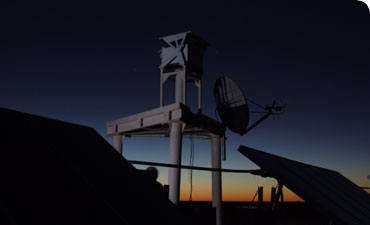Studying meteorites
The study of meteorites is known as meteoritics. It involves studying what meteorites are made from and how they were made. Understanding what meteorites are made from requires examining the different types of minerals that make up the meteorite. This is very much like what geologists do with Earth rocks, because many of the minerals are the same. Working out how they were made is another matter. Many of the conditions that create meteorites are not like anything on Earth. This makes observing and recording the processes that make meteorites very difficult, even with help from astronomers' telescopes and the calculations of astrophysicists.
-

In the field
Although most meteorite research is performed in a laboratory, fieldwork is the only way to collect meteorites and to study the effects of impacts.
-

Under the microscope
To understand what a meteorite is made of, and what has happened to it throughout its life, it has to be studied in minute detail. This is done with the help of microscopes.
-

Cosmochemistry
By understanding the chemical structure of a meteorite, cosmochemistry can tell us a great deal more than through observations alone.
Toolbox

In 2003 nearly 12,000 scientists from over 60 countries came to work at the Museum.
